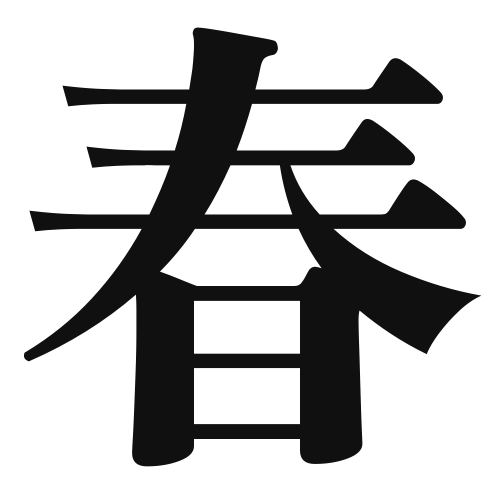1. Overview of Meaning
The kanji “春” (pronounced “haru”) means “spring,” referring to the season characterized by the blossoming of flowers, warmer weather, and the renewal of life after winter.
2. Formation and Radicals
The kanji “春” is a compound character that combines elements to convey its meaning. It is made up of the radical “日” (sun), which represents light and warmth, and the phonetic component “村” (village), suggesting a place where life flourishes.
3. Examples of Usage
Common words and phrases that include “春” are:
- 春休み (haru yasumi) – spring break
- 春の花 (haru no hana) – spring flowers
Example sentence in daily conversation:
「春が来ると、桜が咲きます。」 (When spring comes, the cherry blossoms bloom.)
4. Synonyms and Antonyms
Similar kanji with related meanings include:
- 夏 (natsu) – summer, which follows spring and has a different atmosphere of heat and activity.
- 秋 (aki) – autumn, which comes after summer and is associated with harvest and change.
Antonyms include:
- 冬 (fuyu) – winter, the season characterized by cold and dormancy, contrasting with the warmth and renewal of spring.
5. Cultural and Historical Background
The concept of “春” is deeply rooted in Japanese culture, symbolizing renewal and hope. It is celebrated during the Hanami festival, where people gather to view cherry blossoms in full bloom.
Proverbs and idiomatic expressions related to spring include:
- 「春の訪れ」 (haru no otozure) – the arrival of spring, often used to signify new beginnings.
- 「春はあけぼの」 (haru wa akebono) – spring is dawn, emphasizing the beauty and freshness of the season.
